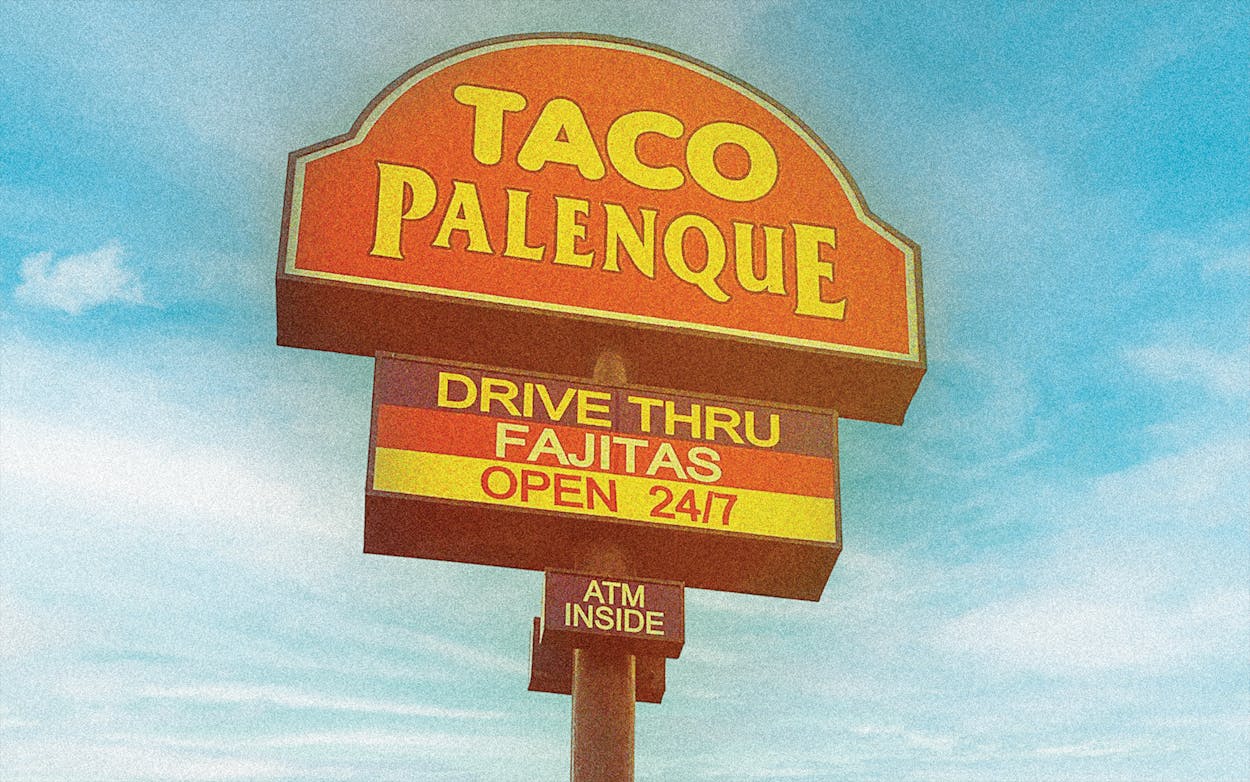There’s Taco Bell, and then there’s everyone else. Torchy’s Tacos and Velvet Taco may aspire to national reach, but they’ll never match the market share—or the international footprint, across nearly thirty countries—of the home of the Crunchwrap Supreme.
Yet they and other Texas-based chains—Taco Bueno, Taco Cabana, Taco Casa—share common traits with Taco Bell. Their menus are filled with head-scratching takes on Americanized Mexican food, and they were each launched by non-Hispanic white founders with access to levels of investment capital that most Latino business owners can only dream of.
That shouldn’t prevent you from enjoying a Cheesy Gordita Crunch at Taco Bell or a Torchy’s Scallywag (fried shrimp coated in coconut and Cap’n Crunch) or whatever mass-produced fast-food concoction delights your taste buds. I’m no stranger to the greasy beauties that are Jack in the Box tacos. I only hope that such fare functions as a culinary gateway to the wider world of tacos—perhaps starting at a Texas chain founded and operated by Mexicans.
Taco Palenque, which first opened on Laredo’s San Bernardo Avenue in 1987, ought to get its own shot at going national. Its founder, Juan Francisco Ochoa Sr., had already achieved success in the restaurant business, opening El Pollo Loco in 1975 in his hometown of Guasave, Mexico. It became a chain and entered the U.S. within five years, serving marinated, flame-grilled chicken along with tortillas and salsas. Today it has 495 restaurants, stretching from California to Louisiana.
Taco P, as its fans call it, offers house-made flour tortillas, fajitas, and northern Mexico–style tacos, such as the flattop-grilled pirata, with Tex-Mex touches. (For example, the usual white cheese is replaced with yellow cheddar.) The company stays true to its regional roots and doesn’t chase trends. It doesn’t serve the kinds of stunt foods found at state fairs, as many Big Taco chains do.
Though Taco P didn’t open an outpost outside its hometown until 1998, it now boasts 41 locations, including three in Monterrey, Mexico. But it still has a long way to go before it’s competing with the likes of Taco Cabana, let alone Taco Bell.
Why would I like to see Taco P—rather than Velvet or Torchy’s—get big? Because of its straightforward menu, utterly lacking in artifice, and its focus on quality over novelty. It would never try to gussy up a chicken taco with peppercorn gravy and maple syrup in a waffle shell, as Velvet does. Its excellent flan isn’t designed to make social media waves, as is Taco Bell’s neon-hued Baja Blast pie.
Instead, Taco Palenque’s sincere take on Mexican American border food satisfies its regulars and would-be regulars—like me, if it would open one in Dallas—again and again. I’d love to have the pirata’s comforting combination of salty cheddar and charred, roughly chopped beef in a crispy flour tortilla warming my hand right now. I reckon you would too.
This article originally appeared in the May 2024 issue of Texas Monthly with the headline “Taco Palenque Deserves a Bite of Big Taco.” Subscribe today.









